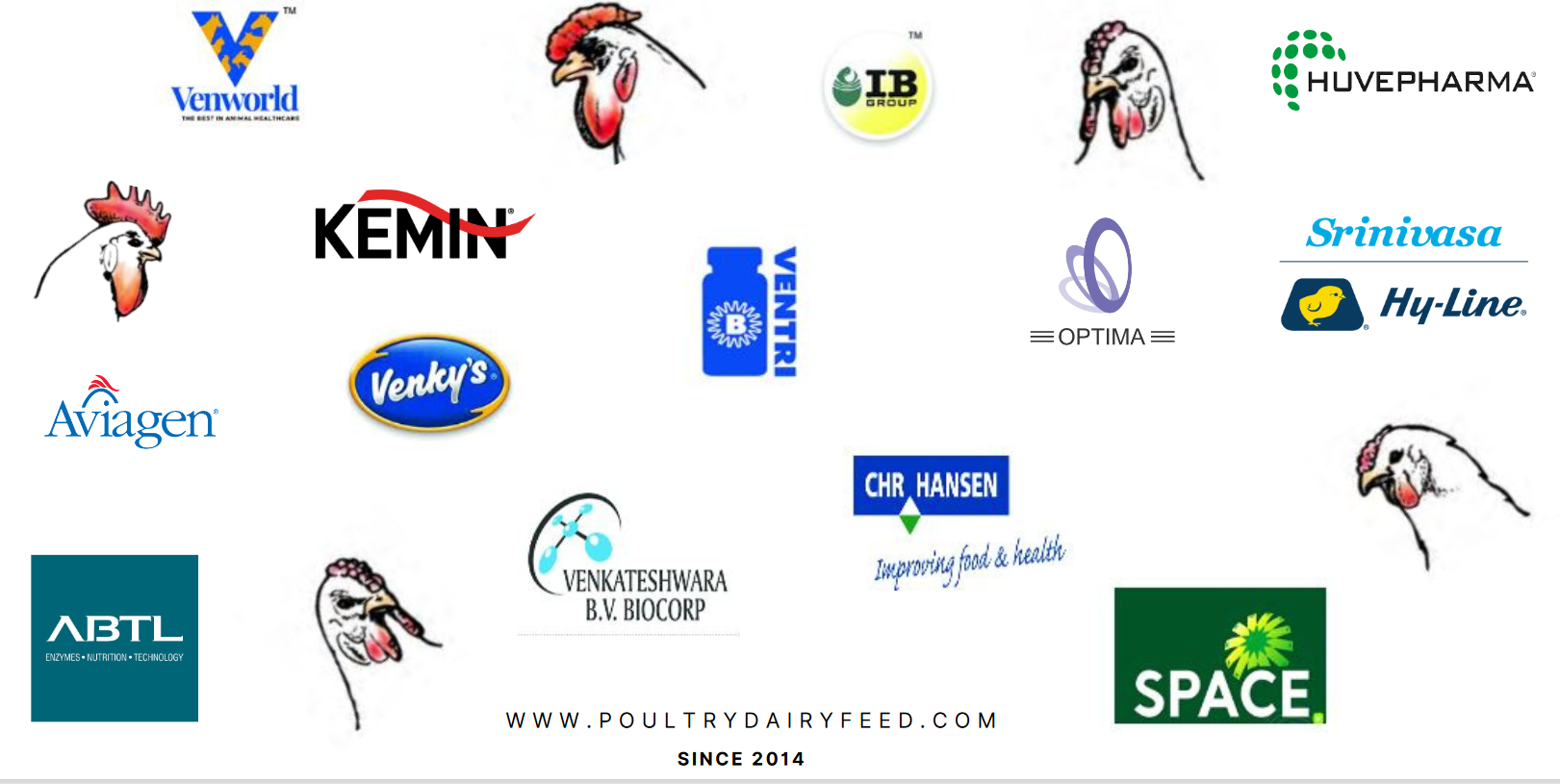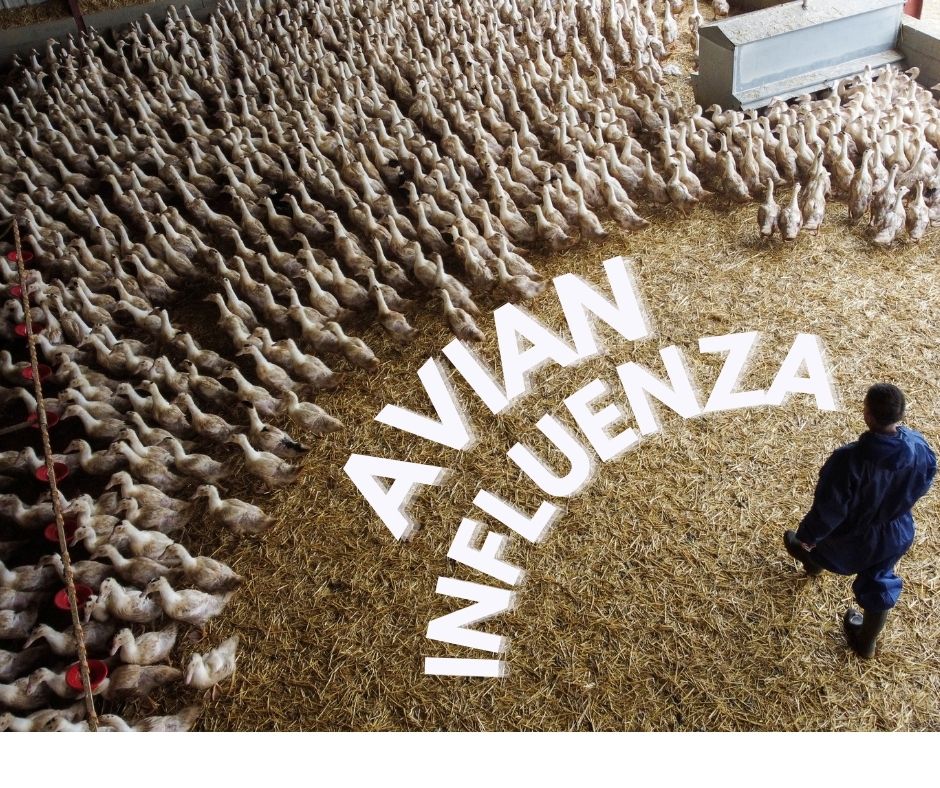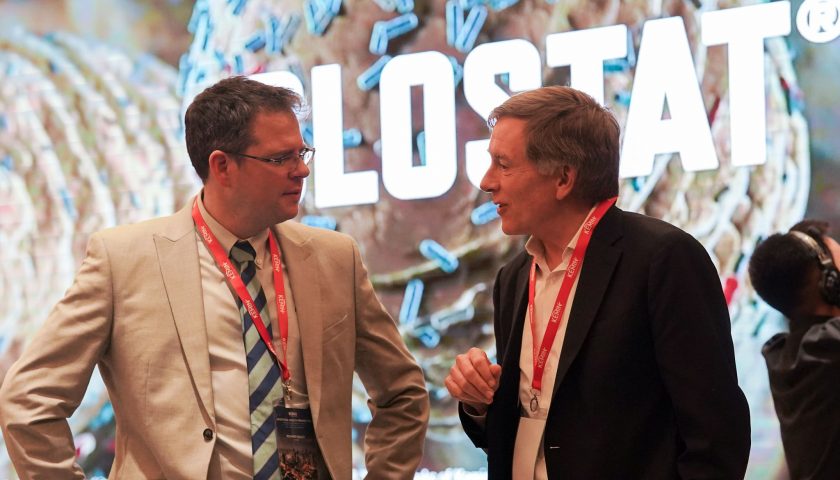Since 2005, avian influenza has had a staggering toll, with over 500 million birds lost to the disease worldwide. Its devastating impact extends beyond domestic and wild birds, threatening livelihoods, food security and public health. The recent shift in the disease’s ecology and epidemiology has heightened global concern as it has spread to new geographical regions. It has also caused unusual die-offs in wild birds and led to an alarming increase in mammalian cases. The rapidly evolving nature of avian influenza and changes in its patterns of spread require a review of existing prevention and control strategies. To effectively contain the disease, protect the economic sustainability of the poultry sector and reduce potential pandemic risks, all available tools must be reconsidered including vaccination.
The current spread of avian influenza is a major concern for the poultry industry, public health and biodiversity. Given recent developments in its epidemiology, and the increasing circulation of high pathogenicity avian influenza (HPAI) in wild animals, stricter biosecurity measures and mass culling of poultry may no longer be sufficient to control the disease. With the seasonal north-south migration of wild birds, countries must be prepared for an increase in outbreaks and should consider complementary approaches, such as vaccination, in line with existing international animal health and welfare standards.
Key facts
- The epidemiology of avian influenza is evolving: the disease is gradually losing its seasonal nature, and high pathogenicity strains are circulating in wild birds.
- This intensified circulation increases the likelihood of virus evolution and spillover to new species, including mammals, posing a risk to human health.
- All available science-based disease control tools must be considered. In certain epidemiological contexts, vaccination can be an effective complement to other control strategies.
- If properly implemented, vaccination should not be a barrier to safe trade.
- Wider use of vaccination stimulates research innovation, improving the quality of available vaccines.
Considering vaccination as part of available avian influenza control measures
Traditionally, HPAI has been of concern mainly in domestic birds, with its control envisaged at farm level. Current transmission patterns show it is now circulating in wild bird populations, driving its spread not only across different farms, but also within farms. In practice, this has made it more and more difficult to protect a farm from disease introduction, due to increased exposure, both from neighbouring poultry farms and wild birds.
There has been a global rise in HPAI outbreaks and an increase in the genetic diversity of circulating virus strains. Thus, the use of sanitary control measures alone may no longer be a sustainable solution to effectively contain the disease. One such measure is the systematic mass culling of poultry, which results in heavy economic losses for farmers, has a lasting impact on their livelihoods and raises social, animal welfare and environmental concerns. Due to its negative impact on the sustainability of production practices and the image of the poultry industry to consumers, its acceptability must be scrutinised.
Measures such as surveillance for early detection and monitoring of avian influenza viruses, preventive health measures (biosecurity) and disease control measures (culling, movement controls, quarantine) remain at the core of any avian influenza control strategy.
However, poultry vaccination can no longer be excluded from the available alternatives and should be considered a complementary tool. When scientifically justified, it offers several advantages:
- Prevention and control of outbreaks in vaccinated domestic bird populations resulting in reduced virus circulation within and between flocks and lower risk of spillover to wildlife.
- Reduced economic losses, both direct (e.g. bird deaths) and indirect (e.g. mass culling and trade disruption). When properly implemented, avian influenza vaccination is compatible with safe trade, according to WOAH international standards.
- Lower risk of human exposure to avian influenza viruses, and thus of a potential pandemic, in line with the One Health approach [5] .
- Minimised environmental impact by reducing the risk of spill over to wild animals.
- Incentives for innovative research to maintain the efficacy of vaccines over time, thanks to the experience gained. This encourages manufacturers to develop and improve access to effective and up-to-date vaccines.
In certain socioeconomic contexts, vaccination against avian influenza can contribute to the overall sustainability of the poultry industry and to the preservation of outdoor production systems. These are often a cultural heritage, even though such systems are not optimal in their biosecurity. It helps to maintain the health of domestic and wild birds, ensuring a stable supply of poultry products for consumers and preserving biodiversity. In addition, vaccination programmes with pre-established risk-based protocols enhance a country’s outbreak preparedness, both in the speed of response and preparation for the increased risk.
Responsibilities of countries opting for poultry vaccination
Avian influenza vaccination should be considered as part of a broader disease prevention and control strategy. This must include other provisions, such as biosecurity measures, disease surveillance for early detection, rapid response to outbreaks and a well-planned exit strategy. Vaccination can be a temporary measure to better control the disease situation. National Veterinary Authorities are charged with the decision to vaccinate based on a risk-evaluation, which depends on several factors and involves varied responsibilities, including:
- The availability of high quality and reliable registered vaccines that meet WOAH international standards and remain effective against circulating strains. Vaccine composition must be under constant review to respond to changing circumstances and epidemiology.
- Sufficient surveillance capacity to demonstrate that vaccination does not interfere with virus monitoring and early detection of outbreaks in vaccinated and unvaccinated bird populations. Robust surveillance systems are essential to monitor the potential presence of avian influenza viruses in domestic and wild birds, as well as in mammals. This determines which strains are circulating and ensures that immunisation targets are met, and appropriate control measures are implemented. However, building and maintaining this capacity is resource-intensive and not possible in all countries.
- The commitment of poultry producers to adhere to the disease control strategy in place.
- Data collection from producers and veterinarians on the duration of protection provided by vaccination and the time of virus shedding after vaccination if live vaccines are used. Such data will help to better define vaccination strategies.
- The capacity to ensure the traceability of the entire process, from vaccine production to on-farm administration and post-vaccination monitoring, including the traceability of vaccinated animals and their products.
Vaccine selection, vaccination protocols and monitoring are critical components of a successful vaccination programme. The level of flock immunity required to prevent transmission hinges on several factors. Depending on the disease epidemiology, Veterinary Authorities – in consultation with the poultry sector – may decide to vaccinate only certain species in a selection of production systems.
Vaccination is compatible with the pursuit of safe trade in poultry and poultry products
To date, despite the global crisis, vaccination has been used only in a limited number of countries as a preventive, emergency or systematic measure to protect poultry or other captive bird populations from HPAI. Concerns about international trade restrictions hamper its use, although the inclusion of vaccination as a control tool has been endorsed by international standards adopted by the World Assembly of WOAH national Delegates.
Unjustified trade restrictions on poultry and poultry products from vaccinated flocks have a huge impact on a sector that contributes significantly to global food security and the economy. In fact, poultry meat exports account for 11% of total production, while egg exports account for 3% of production [9]. Imports of commercial genetic stocks of poultry are also essential to support meat and egg production systems of all countries. In addition, poultry meat and eggs are a low-cost, high-quality, low-fat protein food source, providing commodity redistribution and economic benefits and supporting the livelihoods of small-scale farmers. It is vital to maintain their international trade while ensuring the safety of these exchanges. This can be guaranteed in two ways:
- Countries that vaccinate will need to provide appropriate certification to their trading partners to ensure that their measures comply with WOAH science-based international standards. They must also demonstrate their plans to carry out necessary surveillance of circulating strains once vaccination is in place, and their capacity to prove the absence of virus circulation.
- Importing countries should make risk-based decisions and implement science-informed measures that allow for safe trade while preventing the spread of avian influenza. This is critical to avoid the closure of trade borders and the subsequent economic consequences for the poultry industry, farmers and consumers.
In accordance with WOAH international standards, the use of vaccination does not affect the status of a country or zone as being HPAI-free if surveillance supports the absence of infection. Trade in poultry and poultry products can be conducted safely alongside vaccination.
81% of WOAH Members (107/133 answers) did not use any sort of avian influenza vaccination in the past five years [10], whereas 112 countries and territories reported disease presence over this period.
Policy recommendations
The use of vaccination in poultry against HPAI remains the decision of each national Veterinary Authority in consultation with poultry producers. It should be tailored to the specific epidemiological and socioeconomic context, and the needs and capacities of each country or region.
Flexibility and adaptability are essential to effectively address the dynamic nature of the disease and its potential threat to domestic and wild bird populations, and to public health. Some key considerations for national policies are outlined hereafter.
Decision-making
As described in WOAH standards [6], the decision to vaccinate poultry must be:
- part of a broader avian influenza control strategy with an exit plan;
- accompanied by an solid monitoring and surveillance system for domestic and wild bird populations to guide the selection of appropriate vaccine strains;
- based on the availability of sufficient financial, technical and human resources for disease surveillance and the maintenance of effective vaccination campaigns;
- combined with the enforcement of relevant regulations, including licensing, quality control, and safety standards for vaccines.
Monitoring and evaluation
The maintenance of vaccinations should rely on the regular evaluation of vaccination programmes to gather evidence on their effectiveness and adjust them as necessary, based on surveillance data and scientific developments.
International cooperation, including trade
The implementation of avian influenza vaccination programmes requires a careful balance between disease control and maintenance of safe international trade. Prior to exchange, trading partners should:
- establish mechanisms to ensure cooperation and transparent communication between relevant stakeholders, including ministries, Veterinary Authorities and producers;
- engage in bilateral discussions to agree on certification requirements and trade protocols, and to address trade concerns, so mutual recognition can be ensured in peacetime.
Ultimately, multilateral dialogue and adherence to WOAH standards are key to ensuring that if a country decides to introduce vaccination against avian influenza, it will be carried out appropriately, without sanitary risks and will not form an unnecessary barrier to safe trade. Efforts should be made to maintain open lines of communication, thus minimising trade disruption while protecting animal health and welfare, as well as human and environmental health.





